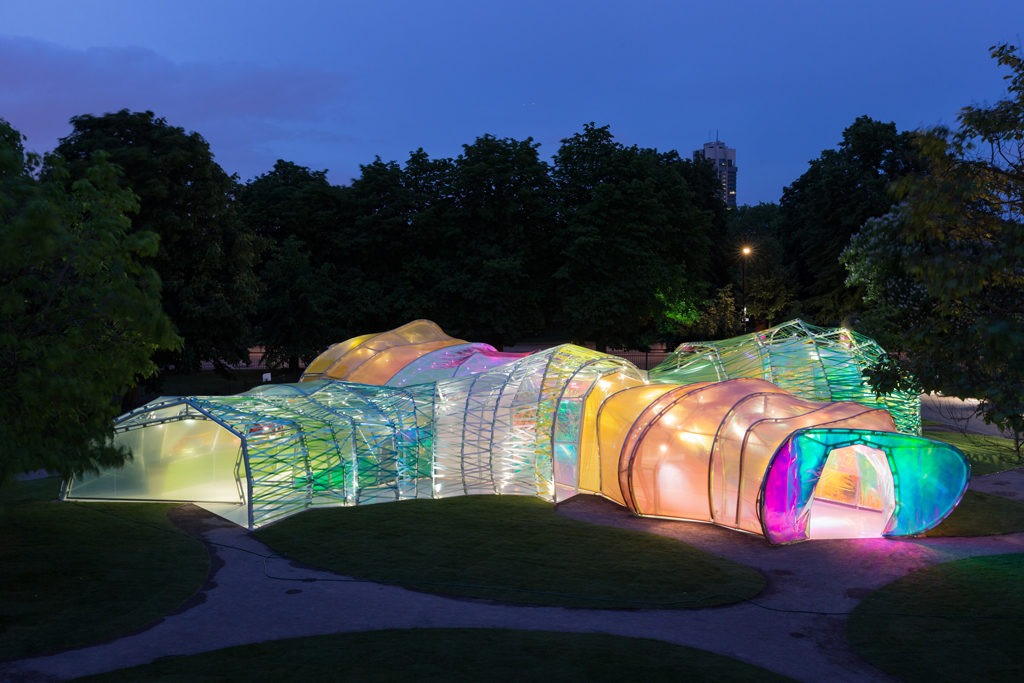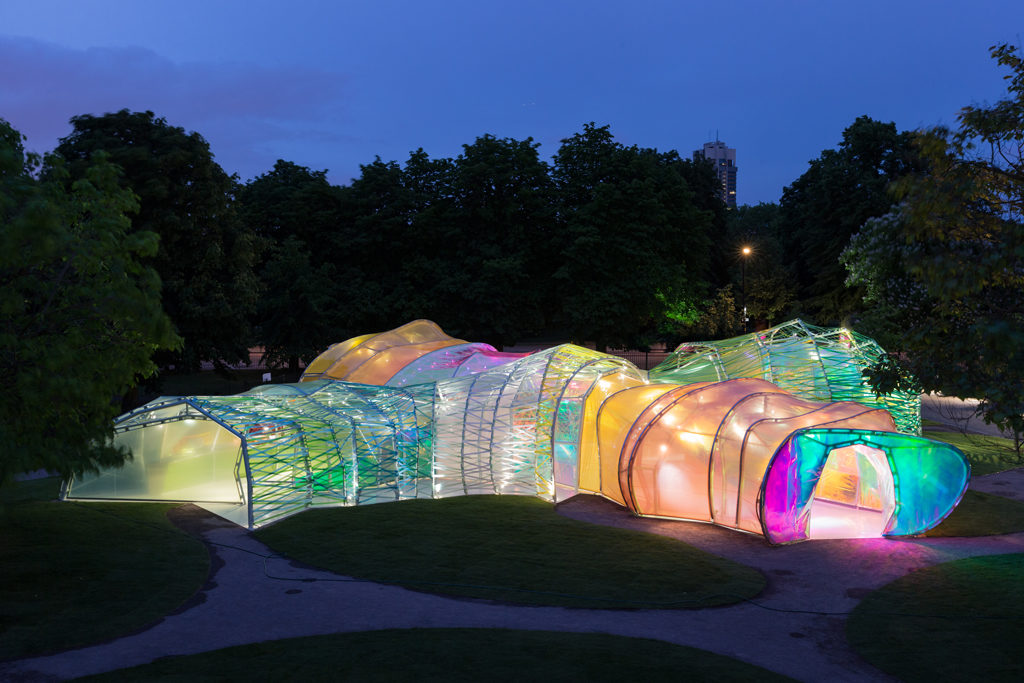[ad_1]

SelgasCano’s Serpentine Pavilion by as it originally appeared in Hyde Park, 2015.
IWAN BAAN/COURTESY SECOND HOME
In recent years, the Natural History Museums of Los Angeles County have made an effort to stage more presentations of contemporary art and strengthen their connections to science and local history, showing a once-censored mural by Barbara Carrasco and an altar dedicated to the city’s diverse history by Ofelia Esparza and Rosanna Esparza Ahrens. This year, the museum will continue to expand its programming by putting on its first contemporary architecture presentation.
Starting on June 28, NHMLAC, in collaboration with the London-based company Second Home, will present the Serpentine Pavilion designed by Spanish architecture firm SelgasCano, which first debuted in London’s Hyde Park four years ago. The project in Los Angeles marks the first time that a Serpentine Pavilion—an architecture project commissioned annually by the Serpentine Galleries in the British capital—will travel to the U.S. As part of the presentation, NHMLAC and Second Home have planned free live-events programming that will focus on diversity and entrepreneurship, L.A.’s future, and other topics.
The pavilion, an X-shaped structure of four brightly colored translucent tunnel-like pathways, will be installed in the La Brea Tar Pits, the excavation site and museum in mid-Wilshire next door to the Los Angeles County Museum of Art. The Pits, which are the only active urban excavation site from the Ice Age in the world, form the area around Hancock Park, where the pavilion will be installed near the Brutalist structure that houses its museum.
“Hancock Park is a lively park in the middle of Los Angeles where excavation, dog walking, and picnicking happen all in the same place,” Cynthia Wornham, the senior vice president for strategic engagement at NHMLAC, said. “The Natural History Museum is committed to integrating science, technology, and art in an imaginative way.”
When Second Home first approached NHMLAC about traveling the Serpentine Pavilion to the States over three years ago, it seemed like “a natural collaboration” that would help achieve the museum’s aim “to explore the intersections of art and science and nature,” Wornham said.
The Serpentine Pavilion is one of the most notable architecture commissions series in the world. Through it, Frank Gehry, Jean Nouvel, Herzog & de Meuron and Ai Weiwei, and many more have designed ambitious structures for the area surrounding the Serpentine Galleries.
“L.A. is a city that we’ve fallen in love with,” Sam Aldenton, the cofounder and co-CEO of Second Home, said. “It’s an open and collaborative city with a horizontality—both physically and metaphorically.” Aldenton added that he sees it as “an authentic way of saying hello” to the city, as Second Home will soon open its first location in Hollywood, in a 90,000-square-foot space that will also be designed by SelgasCano.
“The program celebrates what happens when different types of people and ideas come together,” Rohan Silva, another cofounder and co-CEO of Second Home, said. “We want to create spaces where art can meet technology, fashion can meet government, science can meet creative writing. We believe that diversity makes creativity stronger.”
[ad_2]
Source link

